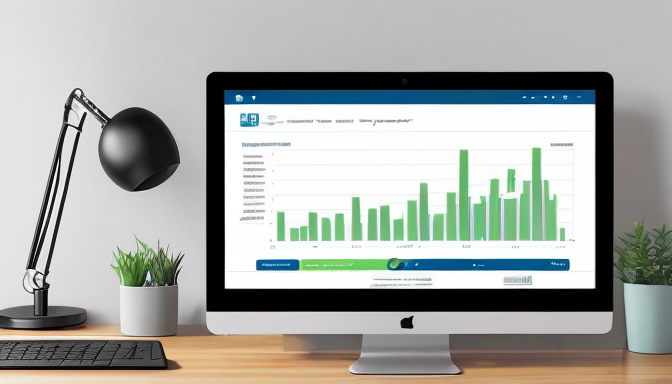Are you tired of a sluggish Joomla website that feels more like a tortoise than a hare? Joomla performance optimization is your golden ticket to transforming your site into a speed demon! In today’s fast-paced digital world, every second counts. If your site takes too long to load, visitors will bounce faster than a rubber ball. So, how can you ensure your Joomla website is not just fast but also mobile responsive and search engine friendly? Let’s dive into some proven optimization techniques that will elevate your site’s performance.
First off, understanding your website’s performance metrics is crucial. Think of it as checking the engine of a car before a long drive. You wouldn’t want to hit the road without knowing if your vehicle is in top shape, right? Key metrics such as load time, page size, and server response time are essential indicators of how well your site is performing. By regularly monitoring these metrics, you can pinpoint areas that need improvement and measure the effectiveness of your optimization efforts.
Next, let’s talk about caching—a game changer in the world of web performance. Implementing effective caching techniques can drastically reduce load times, allowing your visitors to experience a smoother, more enjoyable journey through your site. Imagine walking into a store where everything is organized and easy to find versus one that’s cluttered and chaotic. Which store would you prefer? Exactly! Your visitors feel the same way about your website. So, let’s make it easy for them!
Understanding Joomla Performance Metrics
When it comes to optimizing your Joomla website, understanding performance metrics is crucial. Think of these metrics as the vital signs of your website; they tell you how well your site is performing and where it needs a little TLC. Key metrics to focus on include page load time, server response time, and bounce rate. Each of these plays a significant role in user experience and search engine rankings.
For instance, did you know that a delay of just one second in page load time can lead to a 7% reduction in conversions? It’s like losing potential customers at the door! To truly understand how your site is performing, consider using tools like Google PageSpeed Insights or GTmetrix. These tools provide in-depth analysis and actionable insights that can help you pinpoint areas for improvement.
Moreover, it’s essential to monitor your website’s mobile responsiveness. With more users accessing websites via mobile devices, ensuring your site is optimized for mobile can significantly enhance user experience. A responsive design not only keeps visitors engaged but also improves your site’s visibility on search engines.
In summary, by keeping an eye on these performance metrics, you can make informed decisions that lead to a faster, more efficient Joomla website. Your goal should be to create an environment where users feel welcomed and valued, ensuring they stick around for more!

Best Practices for Joomla Caching
When it comes to optimizing your Joomla website, caching is your secret weapon. Imagine your site as a bustling restaurant; if every guest had to wait for their meal to be prepared from scratch, chaos would ensue! Caching acts like a pre-prepared meal, serving up content quickly and efficiently. By implementing effective caching strategies, you can significantly improve your website’s speed, mobile responsiveness, and search engine visibility.
First off, consider enabling Joomla’s built-in caching feature. This feature stores static versions of your pages, which reduces the load on your server and speeds up loading times for visitors. To do this, navigate to System > Global Configuration > System and set the Cache option to ON. Additionally, choose the cache time wisely; a shorter cache time can keep content fresh, while a longer time can improve performance.
Next, explore the world of third-party caching extensions. Tools like JotCache or Cache Cleaner can provide advanced caching options tailored to your specific needs. These tools allow for greater control over cache management, enabling you to clear caches selectively or automate the process.
Finally, don’t forget about browser caching! By adding specific headers, you can instruct browsers to store certain files locally, reducing load times on repeat visits. This is akin to having a loyal customer who knows the menu by heart and can order their favorite meal instantly!
In summary, by leveraging these caching techniques, you’ll not only enhance your Joomla site’s performance but also create a smoother, more enjoyable experience for your visitors. So, why wait? Start optimizing today!
Frequently Asked Questions
- What is Joomla performance optimization?
Joomla performance optimization involves implementing various strategies to enhance the speed and efficiency of your Joomla website. Think of it as tuning up a car; just like a well-tuned engine runs smoother and faster, an optimized Joomla site provides a better user experience and ranks higher in search engines.
- Why is caching important for my Joomla site?
Caching is crucial because it stores frequently accessed data, allowing your site to serve pages faster. Imagine having a favorite book on your nightstand instead of searching for it in a library every time you want to read it. That’s how caching works—saving time and resources for your visitors!
- How can I measure my Joomla site’s performance?
You can measure performance using tools like Google PageSpeed Insights or GTmetrix. These tools provide insights into load times, responsiveness, and areas needing improvement. It’s like having a fitness tracker for your website, helping you stay in shape and perform at your best!
- What are some common mistakes to avoid in Joomla optimization?
Common mistakes include neglecting to update extensions, not using caching effectively, and ignoring image optimization. Avoid these pitfalls to keep your site running smoothly and efficiently!